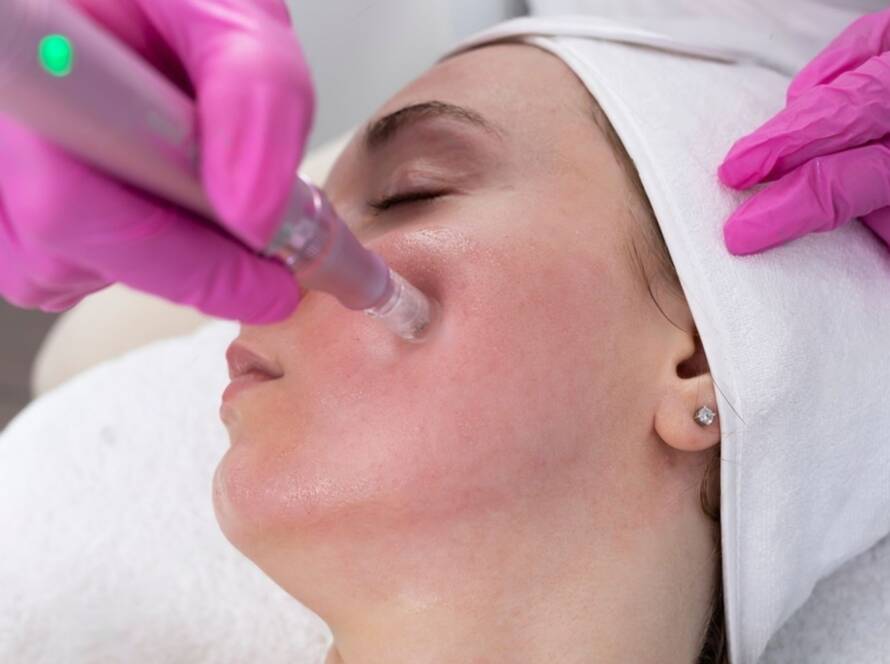Hydrogen peroxide to treat skin is not recommended for use at home. This chemical has many medical benefits but ranges from 1% to 45%.
But that doesn’t mean using hydrogen peroxide to treat skin problems at home is recommended. A low concentration can result in minor skin harm, but concentrations of 9 percent or more may cause more severe reactions, including tissue death.
This article discusses what it is and its negatives.
What is Hydrogen Peroxide?
Hydrogen peroxide is water that has an additional oxygen molecule. Since it releases the extra oxygen molecules (and creates foam), it is a bleacher and disinfectant. It’s also found naturally in the body and plays an essential function in regulating the effects of oxidative stress that contribute to various health issues.
However, that doesn’t mean it’s not beneficial for skin treatment. Different levels of hydrogen peroxide exert more or less effect. The medical-grade hydrogen peroxide is available in a concentration of 3%. This means that the bottle has hydrogen peroxide 3% and 97 percent water.
Higher concentrations are also available but could be harmful when swallowed or inhaled. For instance, hydrogen peroxide, which is 35% or more, is highly poisonous. Most household cleaners containing hydrogen peroxide are rated at 3% to 9%.
The hydrogen peroxide concentrations that are low are generally safe to clean surfaces. Higher concentrations are susceptible to the eyes, skin, and gastrointestinal tract. When swallowed or inhaled, they may cause:
- Burning
- Blistering
- Coughing
- Breathlessness
- Vomiting
- Bleeding
Skin Lightening
Hydrogen peroxide acts as bleach. It can help to lighten areas that are dark on the skin, like the ones caused by:
- Sun damage
- Ageing
- Scars
- Medicines
- changes in the hormones.
Additionally, it may result in skin breakdown. However, it would help if you used it after a dermatologist’s advice.
Risks And Side Effects
Hydrogen peroxide can be a chemical that can cause severe adverse side effects. The greater it is, the more influential the adverse effects could be.
A high concentration of hydrogen peroxide in your skin can result in burning and blistering. Even 3% of medical grade may irritate the skin, which can be resolved by washing your skin with ointment and applying it.
Accidental Ingestion
Accidentally ingesting hydrogen peroxide at low levels is unlikely to cause significant health hazards. But it’s an issue that is particularly affecting children. Ingestion of hydrogen peroxide may cause irritation, vomiting, and other signs.
If you consume more hydrogen peroxide, seek medical attention now. Hydrogen peroxide can cause:
- The bleeding in the digestive tract
- Esophagus burns
- Vomiting
- Diarrhea
- Headaches
- Dizziness
Life-threatening side effects such as convulsions, fluid accumulation in the lungs, and shock can also occur.
Inhaling large quantities of hydrogen peroxide can be hazardous. The symptoms may begin as irritation to the nose and eyes and then progress to:
- Coughing
- Breathlessness
- Chest congestion
- The lungs are bleeding.
Do not keep highly concentrated hydrogen peroxide in your home to reduce and avoid these risks. If you have a bottle containing 3% hydrogen peroxide to clean your home, keep it on a top shelf, away from children. It should be marked.
Summary
The chemical Hydrogen Peroxide acts as a cleaning compound. It’s an effective bleach and disinfectant, but it is not recommended for use in skincare. Consider alternative treatment options for hyperpigmentation, acne, or even minor cuts.
Maintain hydrogen peroxide in your home for household cleaning and disinfecting surfaces. If you’re concerned about taking in hydrogen peroxide or breathing it into your lungs, visit a dermatologist in Manchester or seek emergency medical attention immediately.



